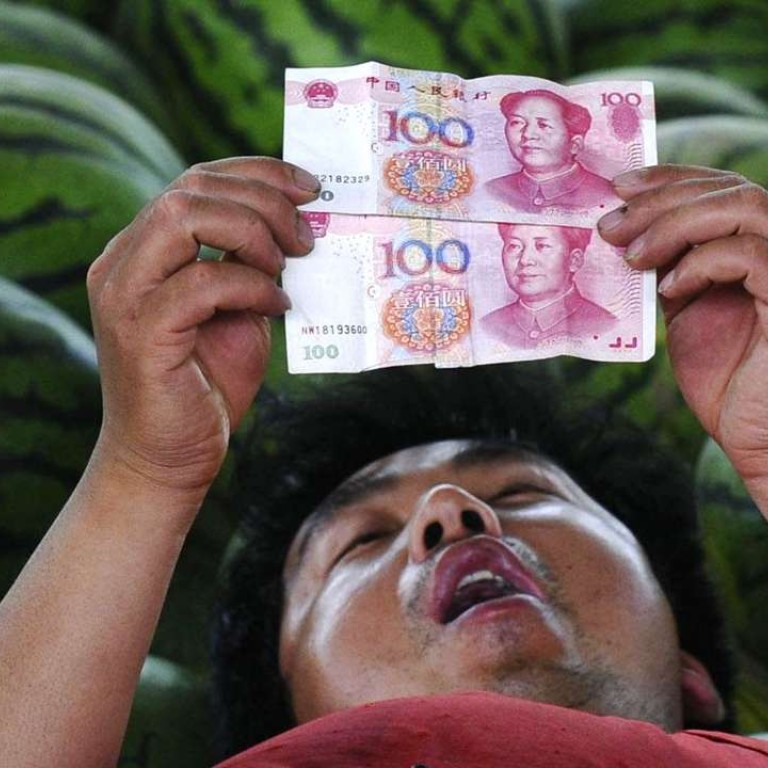
State-backed institutions outshine stock-focused mutual peers
The state-backed institutions seek stable and long-term returns from equity investment, normally picking profitable stocks with solid fundamentals
Some of the mainland’s government-based equity market funds – often referred to as the “national team” – which includes state-backed institutions such as the national pension fund – has become the envy of many retail markets around the world after managing to stem the flow of investment losses last year, after the disastrous summer of 2015.
According to state-owned Securities Daily, Central Huijin Investment and China Securities Finance Corporation, for instance, raked in a combined paper profit of 528 million yuan (US$76.7 million) from investing in 45 A-share firms last year – an impressive performance in a bear run which eventually saw 12.3 per cent wiped off the value of the benchmark Shanghai Composite Index.
The country’s stock-focused mutual funds lost 11.2 per cent of their investment last year, according to Vstone, a Shanghai-based hedge fund house. Just 12 per cent of the nearly 500 mutual funds actively involved in share trading managed to post a profit, Vstone added.
“These stronger performances of the national team should inspire investors to follow on their heels,” said Ivan Shi, head of data analytics at Shanghai-based fund consultancy Z-Ben Advisors, and that’s buying stocks based on solid fundamentals.

“After all, they outperformed the benchmark indicator and the mutual funds.”
The data by Securities Daily was based on the full-year earnings reports published by listed firms, on which the holdings of the 10 largest shareholders were unveiled.
If a shareholder wasn’t among the top 10 owners of an A-share firm, the number of shares it holds in the company wasn’t revealed publicly known, so their profits or losses weren’t counted in the statistics.
So far, only around 200 companies listed on the Shanghai and Shenzhen stock exchanges have published their earnings for 2016. About 3,000 are expected to have reported annual earnings for last year before the end of April.
And analysts say that initial evidence shows that the national team had a strong overall performance.
Central Huijin is a unit of the mainland’s sovereign wealth fund, China Investment Corp, and China Securities Finance is a platform controlled by the China Securities Regulatory Commission (CSRC) that lends money to brokerages for margin financing businesses.
Besides those two powerful institutions, China’s national team of government-backed institutions also include the National Social Security Fund (NSSF), Buttonwood Investment Platform, a wholly-owned subsidiary of the State Administration of Foreign Exchange and several largest state-controlled insurers and brokerages.
The national team has long been viewed as a stablising force on the A-share market.
In 2015, Beijing it gave at least 1.5 trillion yuan to China Finance Securities to stem a precipitous fall following the boom-to-bust scenario in mid-June.

Other members including NSSF and Central Huijin, also shelled out multi-billion-yuan funds to underpin the beleaguered market at that time.
Retail investors regard the powerful institutions as “in-the-know” funds whose investment strategies reflect the thinking of the central government.
The state-backed institutions seek stable and long-term returns from equity investment, normally picking profitable stocks with solid fundamentals.
Over the past decade, the CSRC has been trying to set a healthy tone for the volatile market, encouraging individual investors, many of whom are retired workers, to follow in the footsteps of the big institutions by purchasing shares on valuation, rather than on rumour.
“Retail investors are obsessed with watching the moves by the national team,” said Huatai Securities analyst Liu Qiaoyu. “They want to follow up buying the shares and bet on a further rally. But in many cases, they find themselves getting stuck with paper losses.”
Indeed, China Securities Finance and Central Huijin saw their holdings unchanged throughout 2016 in 37 of its 45 stock picks.
Between them, the two institutions held shares worth 1.1 billion yuan in Hitlink Royalflush Information Network, a financial information provider at the end of 2016.
Alternatively, Securities Daily said that Fuyao Glass Industry Group and Anxin Trust, another two stocks in which the powerful institutions invested heavily, reported at least 15 per cent of profit growth for four consecutive years.
China’s stock market remains retail-driven with small investors contributing the majority of trading value.
Powerful institutions are also subject to investment caps the government set on their equity buying.
The key market indicator, The Shanghai Composite Index, surged more than 130 per cent between September 1, 2014 and June 12, 2015 as investors borrowed money from brokerages and shadow banking system to finance their share purchases, or margin finance.
It sank 43.3 per cent over the next six weeks amid the selling stampede.
The CSRC spent more than a year stabilising the market, rolling out a series of market-boosting measures such as fresh fund injections, limiting share sale by major shareholders and temporary initial public offering suspension.

